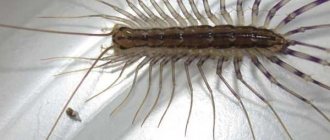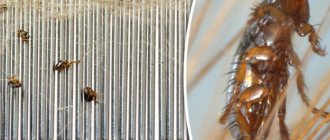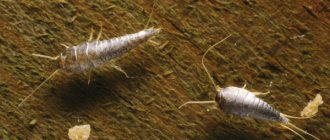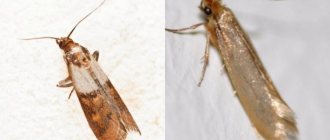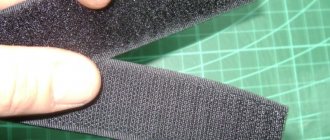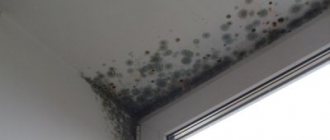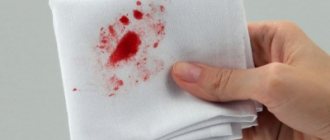Woodlice are small land representatives of crustaceans, common inhabitants of ecosystems of forests and meadows, coastal areas of rivers and lakes. That is, scientifically speaking, wood lice are not insects, as they are usually considered. Woodlice are moisture-loving, feed on plant foods: they prefer decaying parts of plants, but do not refuse healthy growing leaves and stems, as well as roots.
For daytime recreation, they use objects located on the ground, especially those under which moisture accumulates or rotting processes are underway: rotten stumps and tree trunks, heaps of rotting vegetation, stones.
Description of the pest
Woodlice have a chitinous shell of grayish tints, divided into several plates. Fast movement is ensured by seven pairs of legs, the last of which serves as a support and a means of protection from enemies. The elongated whiskers allow the crustacean to navigate in space. Small eyes are located in the front of the body on the sides.
When danger arises, the individual curls into a ball and freezes, pretending to be dead. Woodlice lead an evening and nocturnal lifestyle, and during the day they hide under leaves, stones and other suitable shelters.
The crustaceans calmly survive drought, thanks to special air cavities similar to the trachea, replacing gill breathing. Individuals live on average 9-12 months.
How to deal with woodlice in the greenhouse and garden
Woodlice are small land representatives of crustaceans, common inhabitants of ecosystems of forests and meadows, coastal areas of rivers and lakes. That is, scientifically speaking, wood lice are not insects, as they are usually considered. Woodlice are moisture-loving, feed on plant foods: they prefer decaying parts of plants, but do not refuse healthy growing leaves and stems, as well as roots.
For daytime recreation, they use objects located on the ground, especially those under which moisture accumulates or rotting processes are underway: rotten stumps and tree trunks, heaps of rotting vegetation, stones.
Reasons for appearance
A garden plot may attract harmful crustaceans for the following reasons:
- Excess moisture, which can be caused by precipitation, leaking watering hoses, or excessive soil irrigation.
- Poor ventilation in greenhouses, where the air is humidified to 80-90%.
- Open areas for storing waste.
- Compost pits with temperatures below 40 °C.
- Accumulation of various garbage on the territory (remains of cellophane, brick fragments, cuttings of branches).
- Stagnant water in various open containers.
Crustaceans can get into the greenhouse along with soil, manure or humus from the garden.
Prevention measures
To reduce the risk of woodlice appearing in the house, you should create conditions that are not suitable for their existence. Crevices in bathrooms where moisture accumulates, leaking pipes, clogged ventilation passages, constant condensation - all these are favorable conditions for crustaceans to stay. There are several ways to improve sanitary conditions in an apartment or country house:
- repair risers and plumbing units;
- install mesh for ventilation;
- use acrylic sealants;
- transplant the plants into clean, prepared soil;
- do not dry clothes in the bathroom;
- ventilate rooms daily.
If woodlice cannot enter the house from the attic or basement, then the problem will disappear by itself. They cannot exist without moisture, so when its level is high, heaters (suitable for winter and off-season) and dehumidifiers (used in summer) should be used. The optimal moisture level in the apartment is 60%.
In cases where it is impossible to get rid of high humidity, use traditional or chemical methods to remove unpleasant guests from the house. The former are more accessible, the latter act quickly and help when the number of woodlice is too large.
Damage caused
In the natural environment, woodlice find a sufficient amount of food by eating decaying plants, moss, algae and tree bark. In greenhouses, greenhouses and vegetable gardens, they include spicy herbs and tender vegetable leaves in their diet.
Crustaceans pose a particular danger to low-growing crops that touch the ground with their tops. As the population grows, pests can gnaw plant roots close to the surface and protruding from the ground, leading to the death of crops.
A sign of the appearance of woodlice is the appearance of eaten edges and through holes on the leaves. The result of pests infesting a greenhouse is compaction of the soil. The roots of crops begin to lack oxygen and nutrients.
A small number of crustaceans do not pose a threat to the site, but in the presence of a favorable environment (abundance of weeds, high humidity, debris and plant debris), they can quickly multiply and lead to the death of a significant part of the crop.
How to get rid of a mole in a greenhouse
When detecting signs of moles in their greenhouse, many gardeners begin to panic, since it is believed that these animals are extremely dangerous for the crop, however, moles bring both harm and benefit. The main benefit of moles is that they feed on harmful insects. In addition to worms, the diet of moles includes such pests as click beetles, moths, and cockchafers. However, the mole breaks through tunnels underground and significantly spoils the condition of the soil.
In addition, moles eat earthworms, which impairs soil fertility. When a mole digs, it damages plant roots.
It is difficult to get rid of moles, but folk methods of control make it possible. Unfortunately, not all methods are effective; a large number of methods can be used before the mole leaves the area. Using several methods at once will allow you to do this more effectively.
Adviсe:
- The most effective way is to remove from the greenhouse all the pests that the mole feeds on.
- You can also drive a mole out of the greenhouse with unpleasant odors. For example, put rotten fish in holes or strongly aromatic plants like garlic.
- An effective method is to pour kerosene, naphthalene, ammonia or other substances that have a pungent chemical odor into the burrows.
You can set a hunter on a mole; the best mole hunters are a dachshund or a fox terrier. Such dogs can not only neutralize the animal, but also prevent its appearance on the site, greenhouse or greenhouse. If you manage to drive out the mole, then a mesh that needs to be dug along the perimeter of the greenhouse for more than a meter can protect against its reappearance.
Folk methods of struggle
There are a number of folk remedies to combat woodlice:
A solution based on tobacco, soda and red pepper
Having measured out 3 g of each ingredient, mix them with 1 liter of boiling water. The solution is sprayed onto areas of soil where wood lice were found.
Salt
It is scattered in places where wood lice accumulate. This option cannot be used for processing beds.
Dry kvass product
Add 100 g of powder to 500 ml of water. Spray the solution in greenhouses and beds.
Boric acid
Take 10 g of powder and dilute it in 500 ml of water, treat it with the composition of the bed.
Creating Traps
In pest habitats, place rags soaked in water, birch brooms, potatoes or apples with the core removed at night. In the morning, the preparations are thrown away or burned along with the crustaceans that have climbed into them.
Preventive measures
You already know where woodlice come from in the bathroom and what attracts them. Disturbed microclimate of the room, lack of cleaning and light are three reasons for living next to them. Therefore, we must begin to destroy them by eliminating favorable conditions for them.
Cleaning
Throw away old sponges, napkins, mats, and trash. Wipe down all surfaces, including walls, under sinks, bathtubs, and the bathroom fixtures themselves. It is better to do this with some detergent. It is not necessary to repeat this cleaning every day. Once a week or a little less often is enough.
Dry the bathroom and keep it in that condition. After using the shower or sink, wipe up spills on the floor, wall, and surrounding objects. Try to follow this rule at least once a day. Check all pipes for damage and replace leaking areas. The slightest leak will delay the process for a long time.
Access limitation
How to remove woodlice from the bathroom and toilet so that they do not appear again? One of the most effective means is to seal all the cracks and cover the ventilation with a fine mesh. Fix any leaks and inspect the floor and walls for cracks. If there are any, seal them with silicone sealant. Also close the gaps between the bathtub, sink and wall. Gaps in water pipes can be sealed with alabaster or foam. Perhaps the source of the invasion is not in your apartment. Inspect the ventilation mesh - are there any holes in it?
Creating a favorable microclimate
Leave the bathroom door open and ventilate the apartment after each water procedure or at night. Check if the ventilation is working well. This can be done using a paper strip. Open the windows and door, hold the leaf to the hood. If it sticks to the hole, then everything is fine. Having a heated towel rail or heater on helps a lot - their heat will dry the water faster. If possible, avoid drying large amounts of clothing indoors.
Chemicals
If you cannot cope with harmful crustaceans using simple methods, you can use contact-intestinal chemicals.
Granules "Thunderstorm"
Anti-slug insecticide based on metaldehyde, also effective for killing woodlice. The consumption of the product is 5-6 g per area of 10 square meters. m.
Granules are scattered in the spring around seedlings planted in the ground. The insecticide is left on the ground for up to two weeks and then collected and burned. You can repeat the procedure 2-3 times per season. Analogues of the drug are Chinese “Metaldehyde” and Swiss “Meta”.
The drug should not come into contact with edible plant foliage, as it can cause poisoning in humans if consumed.
Means "Ulitsid"
Consists of a mixture of grains, mustard, wood ash, black pepper, sugar, salt and hops. The main active ingredient is iron phosphate, which causes dehydration in pests and is completely processed by microorganisms in the soil.
The advantage of the composition lies in its safety for the environment and human health. The unpleasant smell of the mixture also prevents it from being eaten by animals. The granules are resistant to precipitation and are highly effective. The drug is scattered between rows at a rate of 3-5 g per 1 square meter. m. One treatment per season is enough.
Insecticide "Fozalon"
Effectively destroys crustaceans in 48 hours due to high toxicity and long-term protective effect (15-30 days). It can work even at low temperatures (10-12 °C). The product does not cause burns on plant leaves.
"Fozalon" is suitable for processing citrus, industrial, fruit and grain crops. Vegetable plants can only be protected if they are grown for seeds. Berry bushes are sprayed before the flowering period or after the end of the harvest.
The drug "Fozalon" should not be combined with alkaline agents.
The working solution is prepared at the rate of 5 ml of 35% emulsion per 5 liters of water. The treatment is carried out in calm, cloudy weather. Plants are protected during their growing season, 1-2 times, in the morning or evening.
When spraying, you must use protective clothing, a respirator and gloves.
Classification of parasites
Several dozen species of woodlice are found in Russia. Of these, only 2 varieties can be found within the apartment. This:
- armadillo woodlouse;
- rough.
For these insects, human housing is not the most suitable place to live. That is why only the most unpretentious representatives can exist here. Scientists say that our country has already developed its own unique species of these creatures. Each of them has its own distinctive features that set them apart from other crustaceans.
Everything is quite simple: there is excessive humidity - wood lice appear in the apartment. It is not difficult to understand how to get rid of them, because there are many available methods. But the first priority is still the elimination of the factor contributing to their spread.
Armadillo (Armadillidium vulgare)
This type is most widespread and is considered the most famous. Its characteristic feature is the presence of a high shell and a dark body color. This parasite can be found quite rarely in apartments. He prefers to live in a damp cellar, basement, and heating mains. In villages and cities it is found in gardens, along roadsides and wastelands. To detect it, just lift a stone or any other object located on the ground.
This species feeds on living and decaying plants. Its presence in front gardens and vegetable gardens can cause significant damage to plantings. On the other hand, they prefer weeds rather than cultivated species. The armadillo has a miniature size and moves slowly. When trying to catch it, the insect curls up into a ball. This species, quite by accident, during one shipment, came from Europe to the United States, where it spread on a catastrophic scale. Now in California there are places where you can find over 10,000 individuals per square meter.
Rough (Porcellio scaber)
This type is most often found in residential premises. Such insects are quite mobile, compared to the armadillo, they run much faster. It costs them nothing to move between floors of apartment buildings and enter old attics, sometimes in whole hordes. If the roof of a building is leaking and no one is in a hurry to fix it, most likely, parasites will soon arrive here.
Professional exterminators know well how to get rid of woodlice quickly. But often home owners decide to deal with uninvited guests on their own.
This species got its name because of the rough surface that can be felt when an individual is caught. In any danger, she does not curl up into a ball, but arches her body and simultaneously moves her ten legs in order to quickly escape. Its shell is quite flat and soft. It may vary in color. There are representatives with black, reddish and white colors, with an inconspicuous pink tint. Individuals with a dark body shade are found mainly when moving towards the east. Once introduced into an apartment, this species can become a potential pest, especially if it gets into a pantry where fruits and vegetables are stored.
Expert advice
Which method of dealing with woodlice would you choose?
FolkChemical
The following preventive measures will help you avoid the appearance of woodlice in your garden plot:
- Timely weeding of beds.
- Renewing the soil in greenhouses and greenhouses, avoiding excessive watering, regular ventilation, removing plant debris and debris.
- Minimizing soil fertilization with peat and tree bark.
- Cleaning the area from rotten tops, fallen fruits and vegetables.
- Removing rotting lumber from the area and uprooting old stumps.
- Storage of household waste in containers with lids and their timely cleaning.
- Adding manure to compost pits. It will increase the temperature of the rotting plant mass to a value unsuitable for woodlice.
- Spring treatment of row spacing with “Metaldehyde”, protecting young shoots from being eaten.
It is necessary to keep the garden clean, promptly remove accumulated debris and weeds, and prevent the soil from becoming waterlogged. Preventing the appearance of pests is much easier than eliminating the consequences of infection.
What to do if wood lice appear again
If after treatment a few weeks later you notice arthropods in your home again, then you should contact professional exterminators. Disinsection service specialists know how to get rid of woodlice forever. First, they determine their habitats in the house and the routes of entry into the home. And the use of special disinfection techniques allows insecticides to penetrate into the smallest crevices, which guarantees the complete destruction of insects.
Sources
- https://master-dez.ru/dezinsektsiya/nasekomye/mokritsa/
- https://hozsekretiki.ru/vrediteli/kak-izbavitsya-ot-mokrits.html
- https://Dezoff.ru/nasekomye/kak-izbavitsya-ot-mokrits-v-kvartire/
- https://Otbelim.com/vrediteli/drugie-vrediteli/mokrica-v-vannoj.html
- https://chistsovet.ru/vrediteli/kak-izbavitsya-ot-mokrits/
- https://GdeKlop.ru/other/effektivno-vyvesti-mokritzhu/
- https://legkovmeste.ru/poleznye-sovety/kak-izbavitsya-ot-mokrits-v-kvartire-promyishlennyimi-sredstvami-i-narodnyimi-metodami.html
- https://www.ivd.ru/dizajn-i-dekor/uborka/mokricy-v-vannoj-kak-izbavitsya-ot-nih-navsegda-45381
- https://dezplan.ru/article/top-5-sredstv-ot-mokric
- https://combat-dez.ru/sredstvo-ot-mokricz-v-kvartire-perechen-dezinficziruyushhih-preparatov-osobennosti-primeneniya-effektivnye-narodnye-metody/
- https://HozHack.ru/mokritsyi-v-kvartire-kak-izbavitsya.html
- https://sandezeco.ru/kak-izbavitsja-ot-mokric-v-kvartire/
[collapse]
What solution should I use to treat the soil against woodlice?
Solutions are rightfully considered more effective means, especially if they are concentrated. You can achieve the desired concentration through trial and error. It is always recommended to start with small doses.
- The number one method is herbicidal soap . It consists of equal proportions of laundry soap, salt, vinegar, mixed well. This mixture is used to water the weeds along the perimeter of the growth of cultivated plants.
- Vinegar and salt - method number two. A 70% vinegar solution is diluted with water to 5%, then a glass of salt is added. Water the weeds with this mixture.
Even strong sun and heat can help get rid of woodlice.
If the woodlice is deprived of moisture, as well as shelter in the form of cultivated plants, it will die on its own.
Ants
Ants that appear in a greenhouse will also cause a lot of problems. They severely damage the root system of plants. Small holes in the ground indicate the appearance of insects.
Fight them
What folk remedies can you use to fight ants:
- Garlic. Insects cannot stand the smell of garlic and will try to leave the room. Garlic cloves are placed on ant paths and next to burrows;
- Borax. The bait with the added substance (0.5 tsp) is placed in different corners of the room;
- Hot ash. Ash is scattered along ant paths and holes;
- Millet cereal. Even though ants like millet, they are unable to digest it, and indigestion leads to their death. Millet is generously scattered next to the minks and on the paths.

